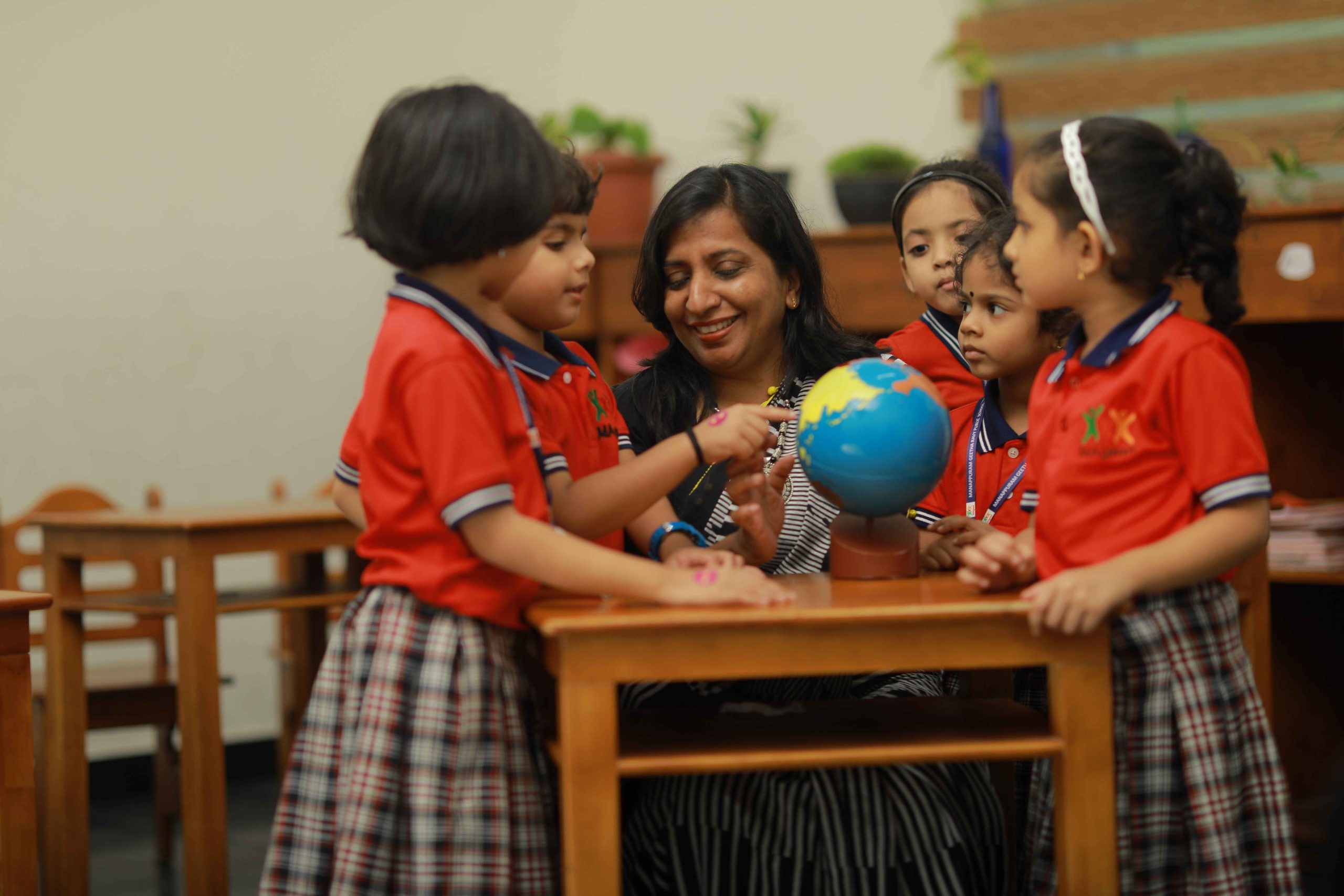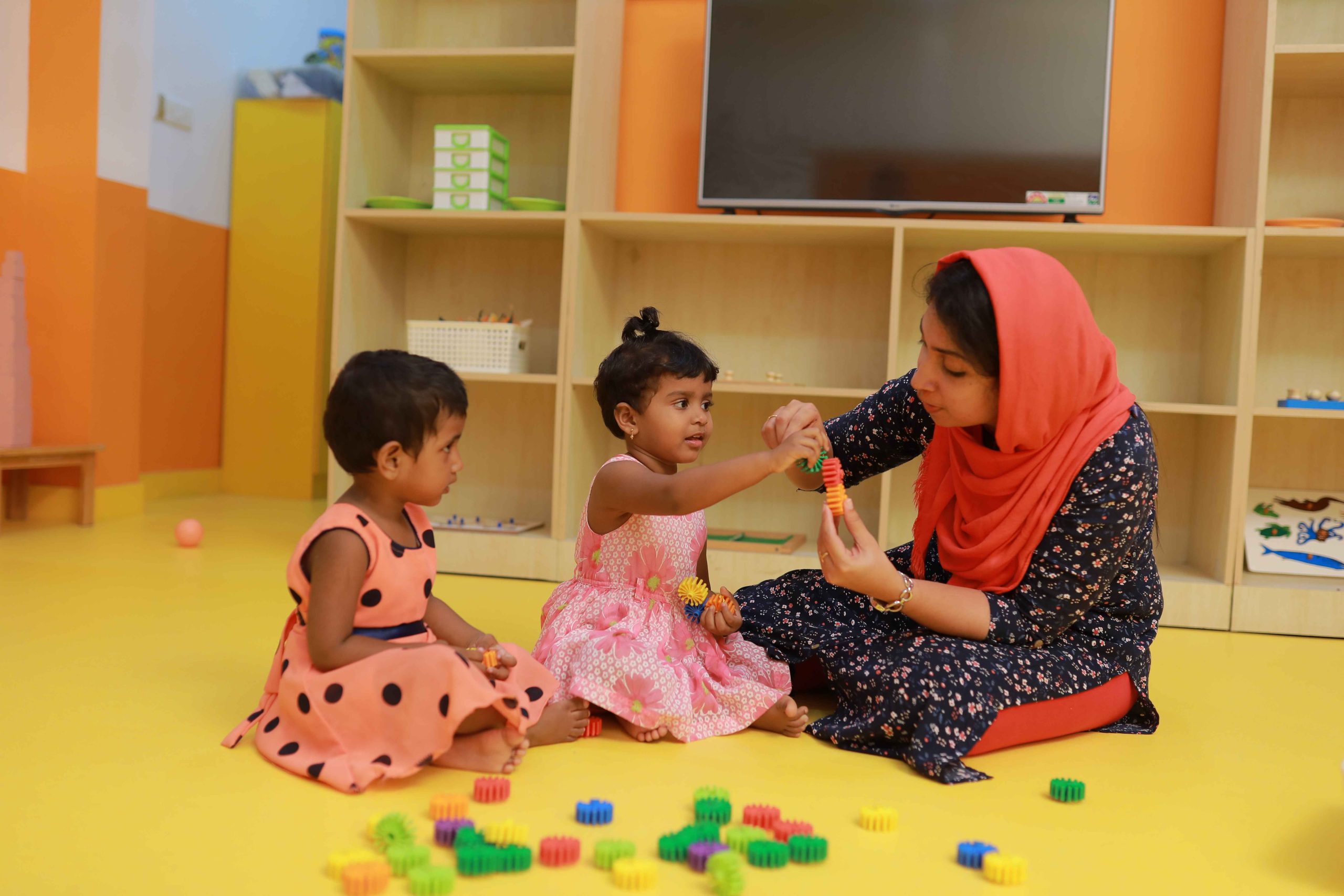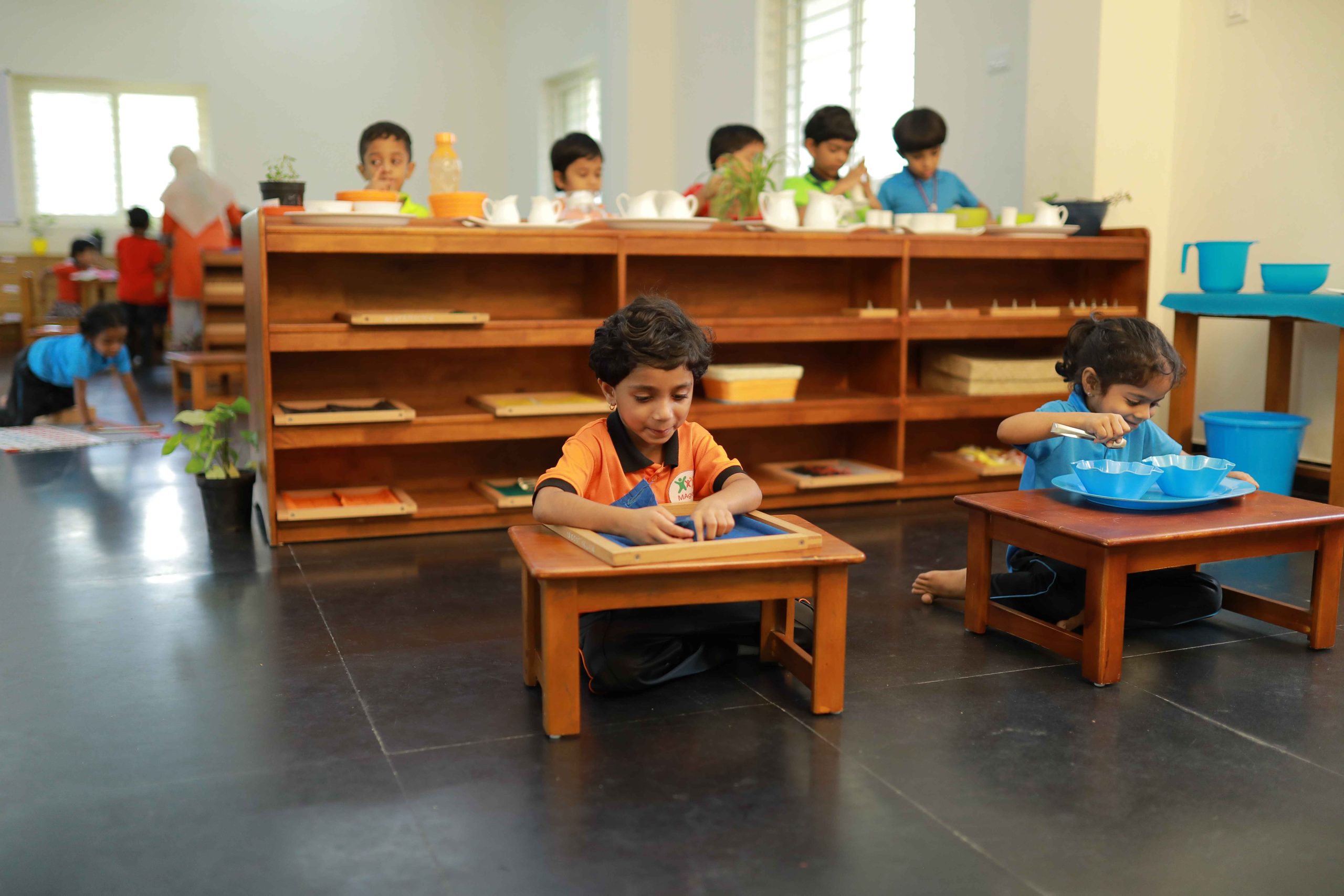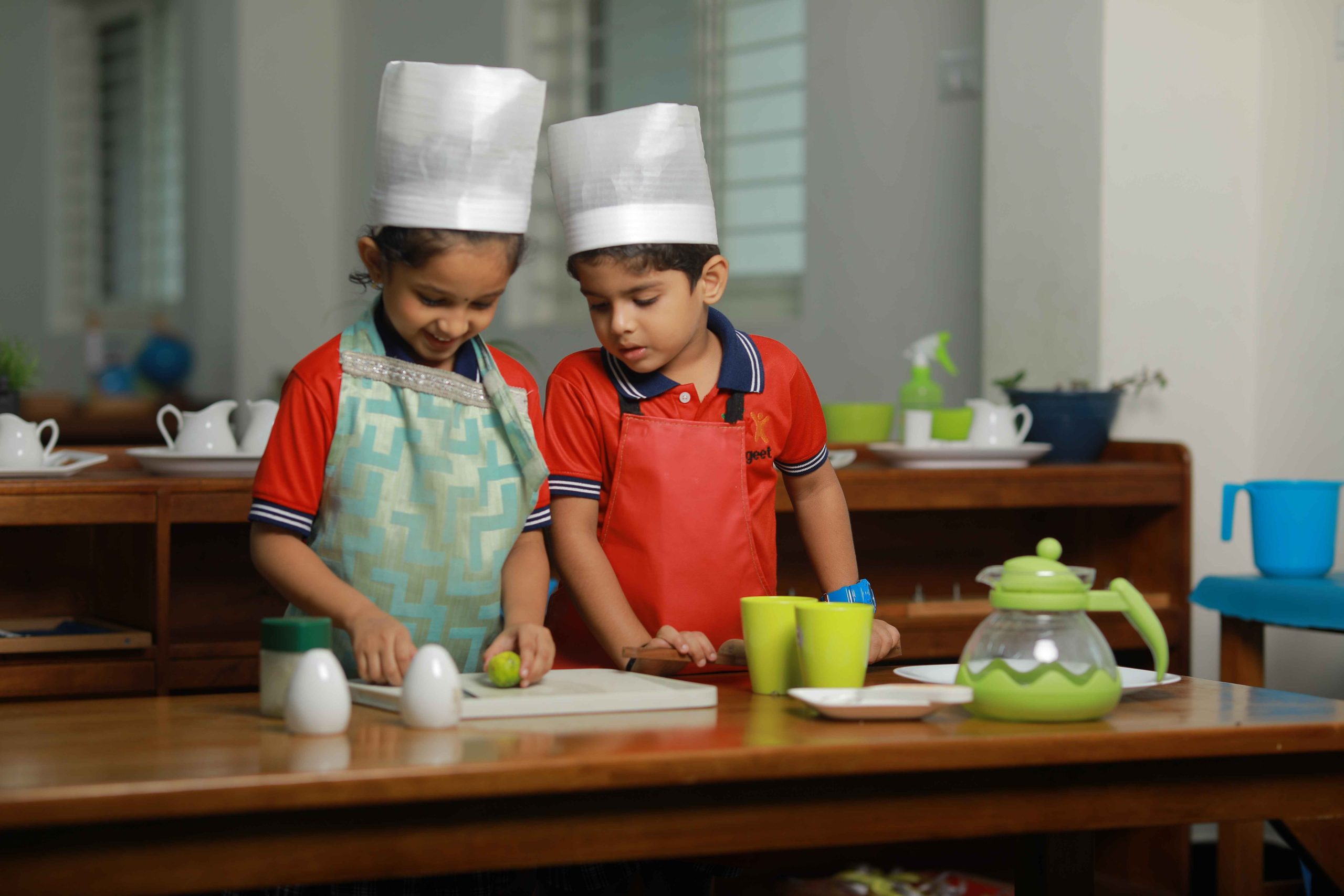Early Learning
In a child’s life, the period from birth to five years is a time of remarkable growth with brain development at its peak. At MAgeet, we employ the MONTESSORI method to provide the highest quality care and education which equips children with essential skills for life.
The five key areas of learning in the Montessori environment include;
Practical Life, Sensorial, Language, Mathematics, and Culture.
1. Practical life includes life skills to help develop independence, coordination, concentration, self-control, self-awareness, confidence. It caters to the following areas:
- Care of Self (food preparation, dressing, washing),
- Care of Environment (cleaning, gardening, care of pets, environmentalism),
- Grace and Courtesy (greetings, manners, social interactions),
- Control of Movement (refining movements, walking the line, moving quietly).
2. Sensorial activities allow the child to refine each of their senses:
- Sight (visual),
- Touch (tactile),
- Smell (olfactory),
- Taste (gustatory)
- Sound (auditory)
- Stereognostic (kinaesthetic).
Includes the manipulation of specifically designed materials that isolate qualities. Refines fine motor skills, visual and auditory senses, and develops coordination and the ability to order and classify.
3. Language is based on phonetic awareness. Children work through specific hands-on and tactile language materials such as the sandpaper letters to the moveable alphabet. Language is not an isolated topic but runs through the curriculum. The spoken language is the foundation for writing and then reading.
4. Mathematics is developed with the use of concrete learning materials. The sensorial area is the preparation for mathematics. Hands-on materials are used such as number rods, sandpaper numbers, number boards, spindle boxes, number tiles, beads, and games. Each exercise builds upon another and the child gradually moves from concrete to abstract areas such as place value, addition, subtraction, multiplication, and fractions.
5. Culture allows the child to explore the natural world around them and includes:
- Geography (continents, landforms, earth layers, solar system)
- Zoology (classification, physiology of animals)
- Botany (ecology, classification, physiology of plants)
- History (timelines, using a calendar)
- Science
- Art and music could be considered cultural activities; however, creativity is encouraged across all curriculum areas. The cultural area is identifying places on the globe, puzzle maps, flags, and perhaps images or materials from other cultures.





